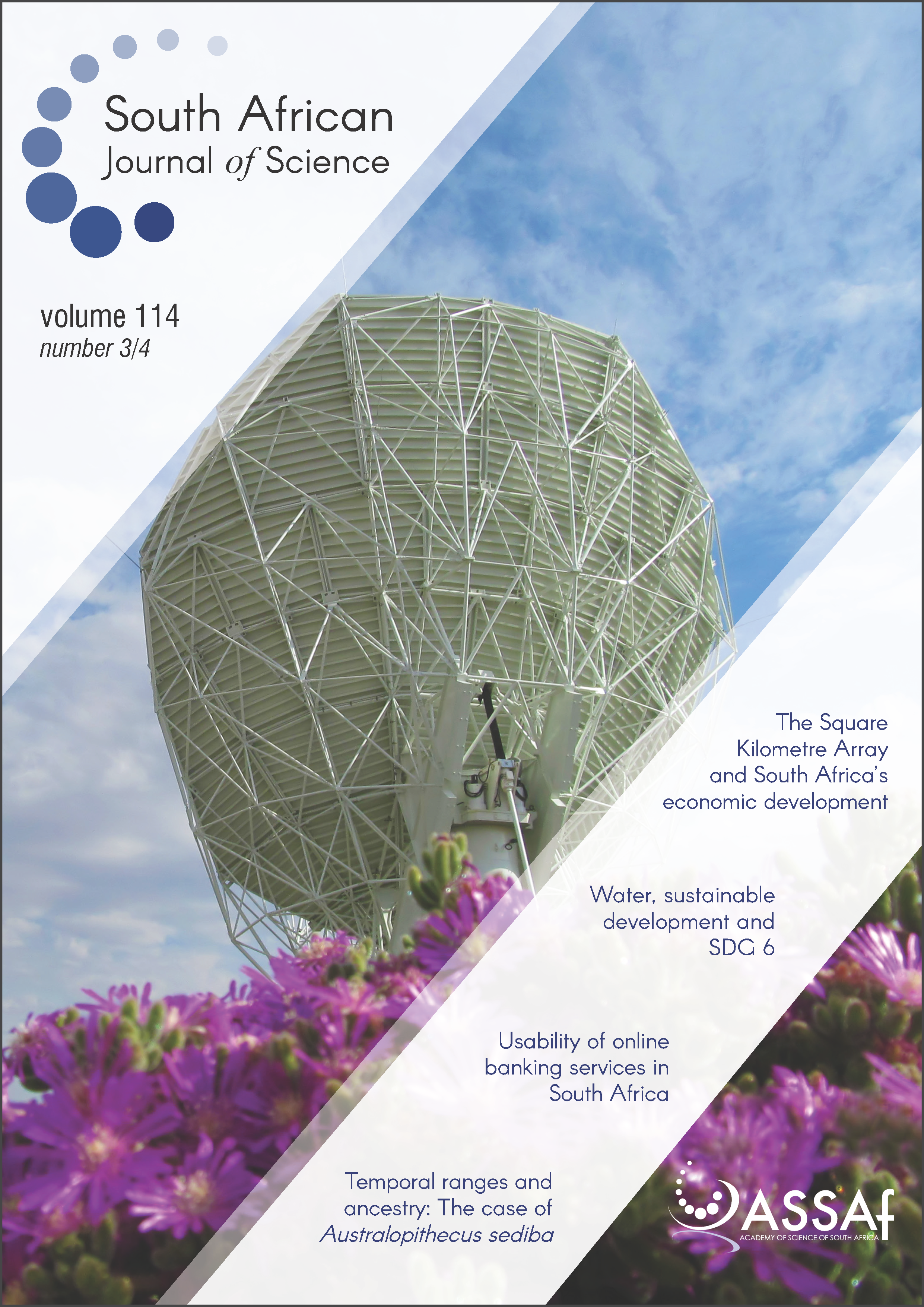Temporal ranges and ancestry in the hominin fossil record: The case of Australopithecus sediba
DOI:
https://doi.org/10.17159/sajs.2018/20170327Keywords:
sampling bias, hominin temporal ranges, FAD, LAD, genus Homo ancestryAbstract
In attempting to resolve the phylogenetic relationships of fossil taxa, researchers can use evidence from two sources – morphology and known temporal ranges. For most taxa, the available evidence is stronger for one of these data sources. We examined the limitations of temporal data for reconstructing hominin evolutionary relationships, specifically focusing on the hypothesised ancestor–descendant relationship between Australopithecus sediba and the genus Homo. Some have implied that because the only known specimens of A. sediba are dated to later than the earliest fossils attributed to Homo, the former species is precluded from being ancestral to the latter. However, A. sediba is currently known from one site dated to 1.98 Ma and, thus, its actual temporal range is unknown. Using data from the currently known temporal ranges of fossil hominin species, and incorporating dating error in the analysis, we estimate that the average hominin species’ temporal range is ~0.97 Myr, which is lower than most figures suggested for mammalian species generally. Using this conservative figure in a thought experiment in which the Malapa specimens are hypothesised to represent the last appearance date, the middle of the temporal range, and first appearance date for the species, the first appearance date of A. sediba would be 2.95, 2.47 and 1.98 Ma, respectively. As these scenarios are all equally plausible, and 2.95 Ma predates the earliest specimens that some have attributed to Homo, we cannot refute the hypothesis that the species A. sediba is ancestral to our genus based solely on currently available temporal data.
Significance:
- We correct a common misconception in palaeoanthropology that a species currently known only from later in time than another species cannot be ancestral to it.
- On temporal grounds alone one cannot dismiss the possibility that A. sediba could be ancestral to the genus Homo.
Published
Issue
Section
License

All articles are published under a Creative Commons Attribution 4.0 International Licence
Copyright is retained by the authors. Readers are welcome to reproduce, share and adapt the content without permission provided the source is attributed.
Disclaimer: The publisher and editors accept no responsibility for statements made by the authors
How to Cite
- Abstract 2757
- PDF 871
- EPUB 242
- XML 267












.png)